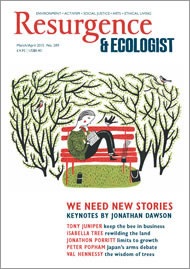This is a carefully crafted work that rewards an equally considered effort by the reader. Gert Biesta presents an elaborate, thoroughly referenced and researched critique of assumptions currently embedded in contemporary education. It’s a book of several unexpected twists and turns, wonderfully woven and often intensely rich. Frequently from a single paragraph a range of avenues emerge, each worth pursuing in its own right.
There are some surprising points of entry. At an early point in the book, Biesta introduces two versions of the Christian creation myth, one of which features the traditional notion of God creating from nothing the heavens, Earth and all that is. In the second account, based on an alternative translation, he introduces the reader, via reference to John Caputo’s The Weakness of God, to a God who brings being into life, which is a subtle and significant difference from creating something out of nothing. It is the life breathed into the elements that God calls ‘good’. The traditional God is increasingly described as a conditional, suspicious and nervous interventionist with a keen eye on how creation should behave, whereas Caputo’s interpretation is of a God who, having created life into the already existent universe, is unconditional as to what next unfolds. Herein lies the ‘risk’ in Biesta’s title and the subsequent uncertainty inherent in educational endeavour. Creation must by definition involve an element of uncertainty; new life must find its own expression.
This might be an unusual opening to what soon becomes a highly academic exploration of education philosophy. Nevertheless the premise of education as a creative partnership with implicit risk remains a consistent theme throughout the book. Another early proposal is that education is regarded as a ‘weak’ domain. Biesta is using this word quite particularly. Returning to the creation stories, the reality of not knowing what might emerge through the creative process must also mean that the creator lacks ultimate determination. In this respect there is a quality of ‘weakness’, or openness in the process. Whilst Caputo references a God who indeed brings life into matter, this generative creator cannot shape what emerges. Likewise, in the educational partnership, the teacher cannot precisely determine the impact of the learning process. It is, to some extent, an act of faith.
After his opening section, Biesta turns his focus to what he regards as a more pertinent question: to what purpose(s) is the educational endeavour? In the current preoccupation with the role of the learner and consequent emphasis on personalised learning, Biesta spots a problem. Learning is in most respects value-neutral. Whilst it is commonly regarded as a focus in schooling and lifelong education, the purpose for which learning takes place remains undeclared, or at best camouflaged. With its purpose remaining obscure, or with learning even regarded as an end in itself, there are potentially malevolent implications. Biesta skilfully discusses how the innate capacity for learning is politically hijacked and becomes an ascribed role of those caught in a system of schooling. The notion of learners ‘belonging’ to schools and teachers creeps into the language of schooling, and children are then tasked with learning primarily to satisfy external agendas.
Biesta challenges other truisms embedded in current educational discussions. In particular, he critiques the futility of substituting a standardisation framework for a clearly understood educational purpose. He also notes the fascinating tension between the experience of ‘learning from’ and that of ‘being taught by’, and this exploration gives rise to a powerful argument for reclaiming the role of the teacher as more than simply that of an ‘enabler’ or ‘facilitator’ of learning.
Perhaps the most helpful insight and challenge I will take from my reading of The Beautiful Risk of Education is Biesta’s consideration of the rise of competence-based practice. Naturally any right-minded person would seek a competent workforce in education: teachers should be skilful in their work, and Biesta is not suggesting otherwise. However, teacher training typically does not reach beyond the objective of competency. Biesta invites readers to consider the possibility of what lies beyond competence, and offers the quality of virtue and professional judgement. Ultimately, he suggests that becoming ‘educationally wise’ is a more profound aspiration for our teachers.
Herein lies a more nuanced concept of the role of educator. An educational world dominated solely by competent teachers is likely to generate a stronger, deterministic experience for learners, and wider society will increasingly be able to account for its investment. To develop an educationally wise profession might breathe creative energy into the learner’s experience and in doing so brings risk and faith back into the process. Biesta’s most significant achievement is to provoke us to think about the choices we have made and what might be possible if we dare.






